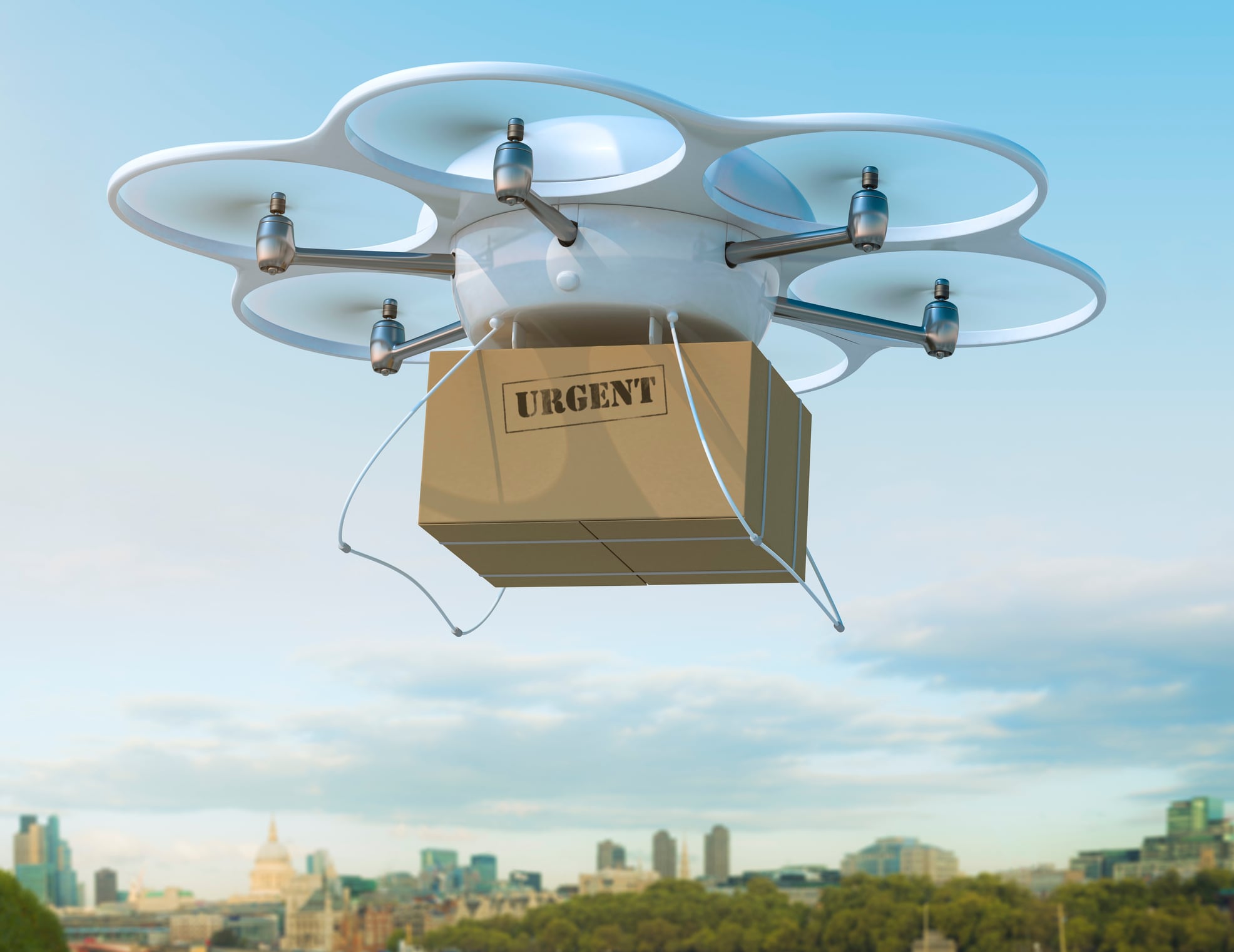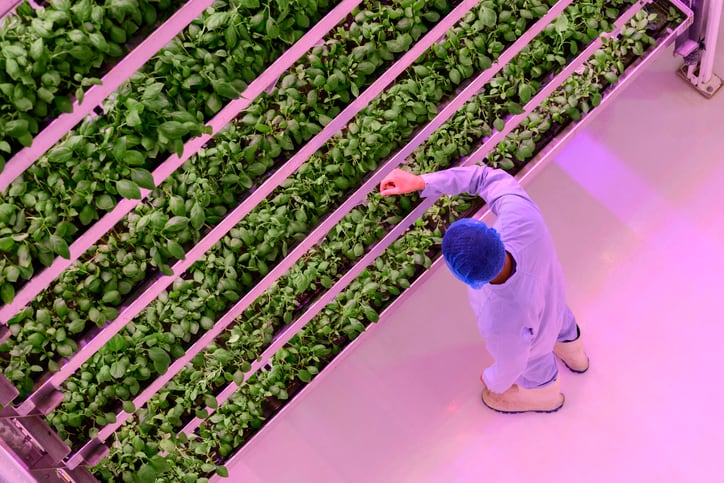The programme was set up in 2015 in the hope of increasing the adoption of drones within various industries including food delivery and agriculture. It believes the exploitation of drone technology could present important opportunities for UK industry to become a world leader in commercial drone services and applications.
However, regulation is a current barrier to the more widespread use of drones in the food and agricultural sectors. Drones are not currently permitted to, say, pick up your pizza from your local restaurant and drop it on your doorstep. For this to happen, so-called ‘beyond visual line of sight’ (BVLOS) operations will need approval from the UK government's Civil Aviation Authority. Currently, in its simplest term, drones must always be visible to the pilot, without the use of, say, binoculars and telescopes, and they may not be flown behind trees, buildings, or other obstacles. BVLOS approval will change this and essentially mean drones will get the green light to fly safely alongside other airspace users and be allowed to carry food and grocery deliveries to customers in their homes, amongst other things.
A PwC report predicts BVLOS approval will be in place by 2030 by when 70,000 commercial remotely piloted drones will be operational in UK skies performing in many sectors including food, medicine and logistics.
The benefits are many, Tew told FoodNavigator. Although they won't be able to carry as many items as a delivery van or lorry, drones are battery powered meaning fewer road emissions. They are faster and cheaper than road vehicles. They can also access more remote areas that may be off limits to delivery apps or online supermarket delivery.
A host of platforms and apps offering food home delivery services through courier services have proliferated very quickly in recent years. It's far more appropriate and greener to get those off the roads and into the skies, said Tew. "There's a huge environmental win here by taking those deliveries off the road and into the sky." she told us.
That said, she envisages drone technology being used in conjunction with existing delivery services. "You can get an awful lot more in a car than you can in a delivery drone so it might not be appropriate necessarily to always use a drone.” she explained. “What we're doing is introducing a new tool into our logistics industry rather than taking anything away."
Up, up and away
Range, however, which depends on the battery, should not prevent drones from travelling the distance required to compete with delivery apps and online supermarkets. The UK’s largest supermarket Tesco, for example, recently trialled drone deliveries in Ireland. Customers were able to order up to 700 products via a mobile app, which were then packaged by a Tesco employee and fulfilled by a supervised drone from Irish tech start-up Manna. The scheme could deliver items within a 2km radius.
Professional drones have flight times of between 20 to 30 minutes and Tew predicts delivery drone services will eventually operate a radius into the 10s of miles.
The chief executive of aforementioned Manna, Bobby Healy, further believes approval in the UK has opened up the possibility of food deliveries by drone across Europe as a whole. “This is the start of the journey that will culminate in ubiquitous use of drones for routine tasks like delivery of food and grocery,” he said. His estimation is that – and congruent with the European Union Aviation Safety Agency timelines – drone delivery will begin to scale across Europe from 2023.
“It's clear that drone delivery provides a faster, cleaner, safer, cheaper and higher quality alternative to road-based delivery. We are excited about how that will improve the world,” he added. “This technology will transform online food marketplaces, restaurants, dark kitchens, and communities globally.”
Drones and future of sustainable farming
Drones are already being deployed in agriculture to help farmers, amongst other things, meet ambitious environmental targets (the National Farmers Union has set the goal of reaching net zero greenhouse gas emissions across the whole of agriculture in England and Wales by 2040).
Drone technology can monitor the impact of climate change reduction efforts by providing effective, efficient and real-time data and imagery. Drones, for example, are currently helping farmers optimise the use of inputs such as seeds, fertilisers, water and pesticides more efficiently.
Tew said she expects agricultural drones to get BVLOS approval before other sectors because there are fewer people and buildings on the land where they will be deployed. This will allow farmers to begin surveying larger areas of terrain. Tew continued: “by 2050, we hope that the technology will be intelligent enough to know when it needs to go out and inspect fields and more."
There are challenges, needless to say, such as who operates them, and what happens if there’s no broadband coverage (a particular bugbear for those in rural areas).
Crucially though cost should not be a barrier to the adoption of this type of technology, stressed Tew. "A drone is much cheaper than a quad bike, for example. So, your capital investment is lower with drone technology. You can also outsource to people who understand how to operate them and get the data from them.” Maintenance costs are low too, she added. "The value chain hasn’t matured yet, so we'll see some farmers owning their own drones where they've got the capacity and capability. However, other farmers will outsource and rely on companies to handle the drone operations.”
Like with the delivery app space, Tew sees drones as an important addition to the toolkit available to farmers as they embrace the shift towards cleaner agricultural systems.
“Drones won't replace boom spraying [the most common type of apparatus for applying herbicides in broadscale farming] across the country,” she elaborated, “but they will fit into a niche where farms can be more precise and are able to manage the land in the most cost effective and green way.”




